Today on Monday Mysteries we take a look at a perplexing perspective that Chris and I spied in Paris.
So there we were, on our next-to-last day in Paris, wandering through an area with interesting art galleries. We happened to walk by one that seemed to have a huge photograph of canals in Venice. Except, it didn’t look quite right. We decided to take a closer look, and soon realized that it was a painting, not a photo. That was the first surprise.
But the bigger surprise was that the scene seemed to move and change as we walked by it.
OK, well, the painting didn’t really move, of course. But the objects in the painting seemed to move as you walked from left to right in front of it, creating a little bit a perspective puzzle as to what was going on in that painting.
Below is my photo of the painting in the gallery window, viewed while standing directly in front of it. I think you can see that the canals seem to stretch out in a straight line in the painting, despite the large glare on the gallery’s window:
Now here’s a photo I took of the painting from the side, where the canals seem to stretch out at an angle, different from what they looked like when viewed from the front. I.e., it looks like the scene in the painting has shifted:
We were very curious as to what exactly was going on in this painting, particularly when we realized that the gallery had an entire show of paintings with similarly perplexing perspectives. Looking up the artist online once we got back to our hotel in Paris, we discovered that the artist, Patrick Hughes, is quite famous for this type of perspective-shifting painting. Hughes calls his style a Reverspective, which turns out to be quite an effective system for creating images that fool the eye into seeing shifting perspectives in a seemingly straightforward image. BTW, here’s a link to a better photo of the painting, called A Couple of Canals, on Hughes’ website; in the straight-on photo of it, though, you can’t tell that it has the ability to change perspectives.
Now, go back to my photo where you see the painting from the side. I think if you know what you’re looking for you can actually see the “trick” of his work revealed to see how he accomplishes the variable perspectives. In my photo, located the top right edge of Hughes’ painting, where there’s a patch of blue. Follow that blue color down to the right. Do you see how the image starts look like it is “popping up and out” of the frame? It actually is doing that – and that’s the key to the trick of perspective in Hughes’ Reverspective works. They are painted on 3D pyramids that extend out of the frame, and not on a flat canvas. Until you view the works from the side, though, you can’t tell that, as it seems like you’re looking at normal painting on a flat canvas, so seamlessly do the painted sides of 3D pyramids merge together. What’s also interesting is that the part of the image that seems to be the furthest away from you —in this case the far-end of the canals — is actually painted on the top of the pyramids, which are the closest point of the painting to you in the pyramid.
If you want to learn more about Reverspectives, you can click here to watch a 3-minute video with Patrick Hughes where he talks a bit about his work. It’s quite an interesting gimmick – er, technique. Gimmick or no, when seen in person, the effect is quite astonishing.
Chris noticed, as we read Hughes’ website on our next-to-the-last-day in Paris, that one of Hughes’ works is currently housed in the British Library in London. That Library wasn’t going to be very far from where we were headed the next day on our trip. So on one of our London days, we went to check out Hughes’ work at the British Library, entitled Paradoxymoron. The woman at the Information Desk at the Library told us where to find the painting, and also cautioned that she always tells schoolchildren that it’s protected by laser beams, so no touching! That’s also good to know for big kids, too, as it definitely could be tempting to want to touch to the top of one of the pyramids when you finally realize what’s going on. 😉
Below I have a few still photos I snapped of Paradoxymoron to show a few of the different perspectives from different angles. However, if you want to get a feel for walking back and forth in front of the painting, here’s a link to a video by someone else that provides a final “solution” to the mystery of the perplexing perspective.

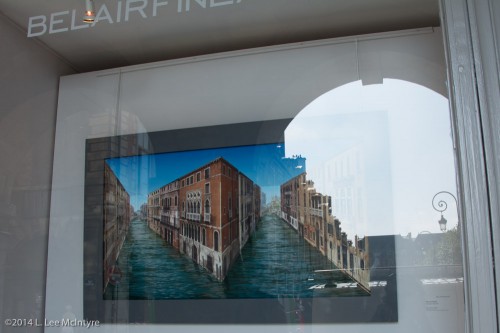
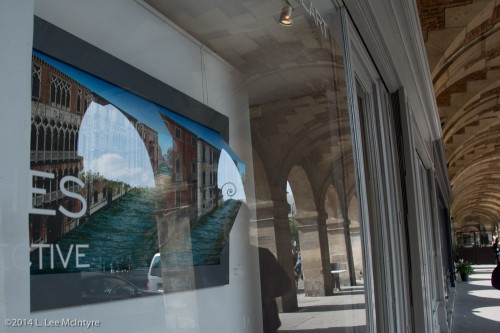
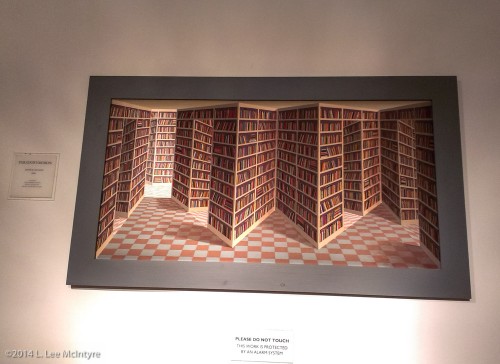
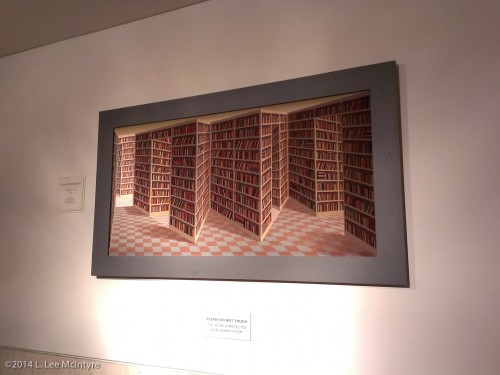
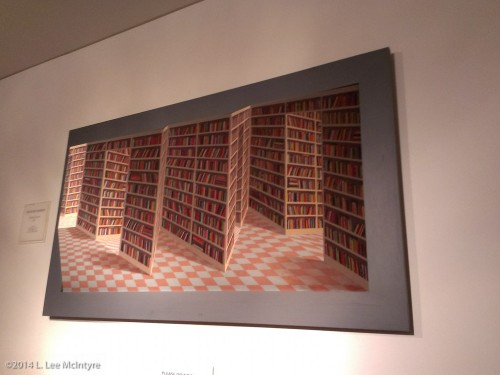
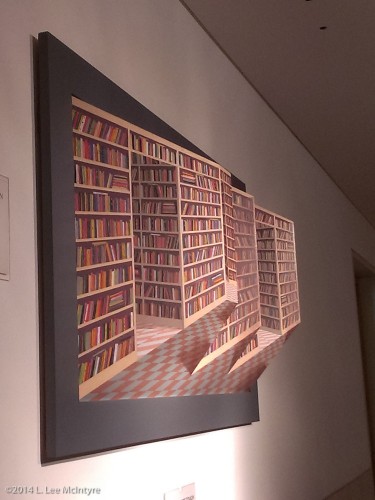
Wow, that last one, the side view, is especially impressive.
Thanks, Dovie!